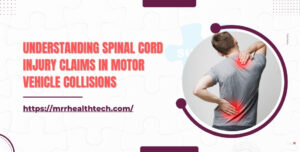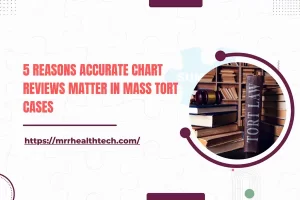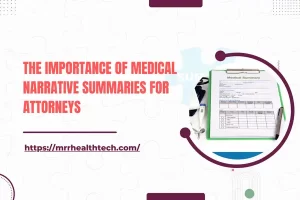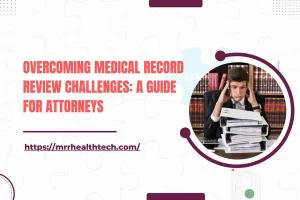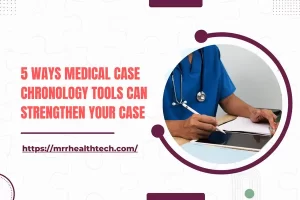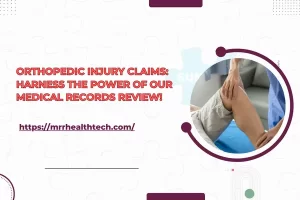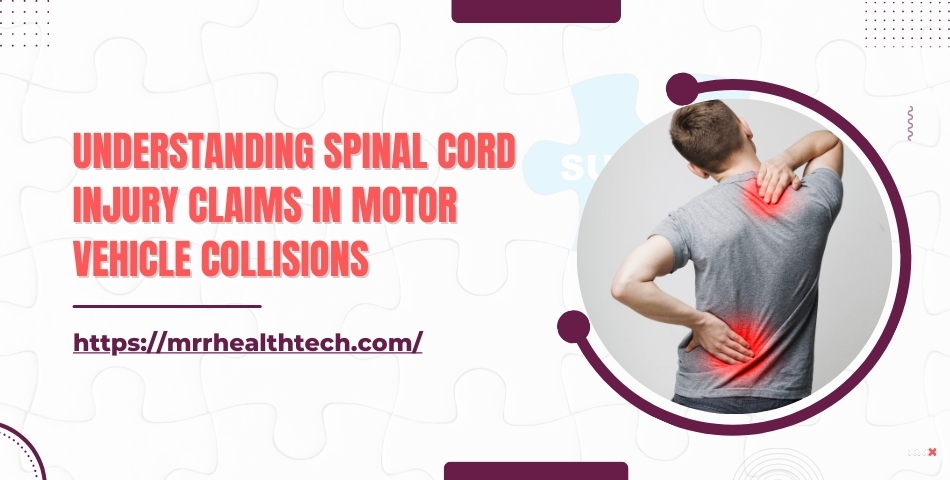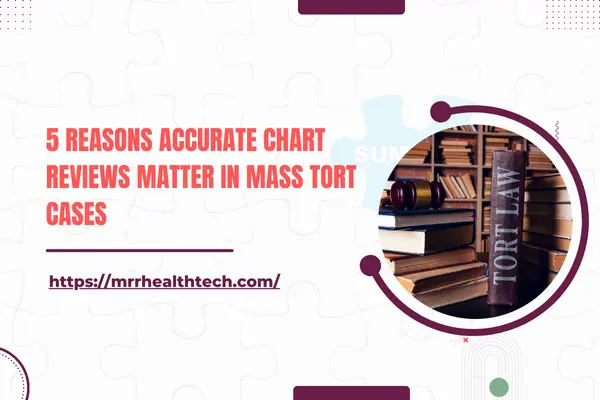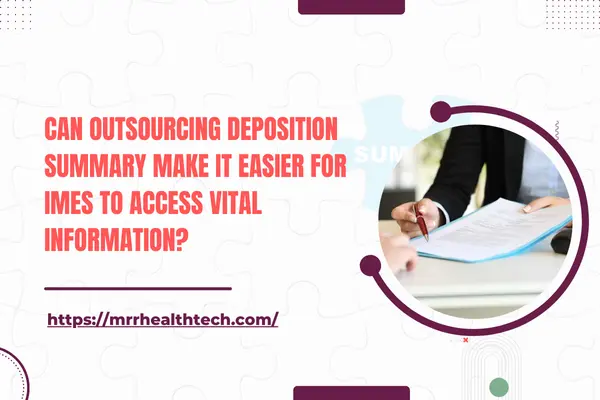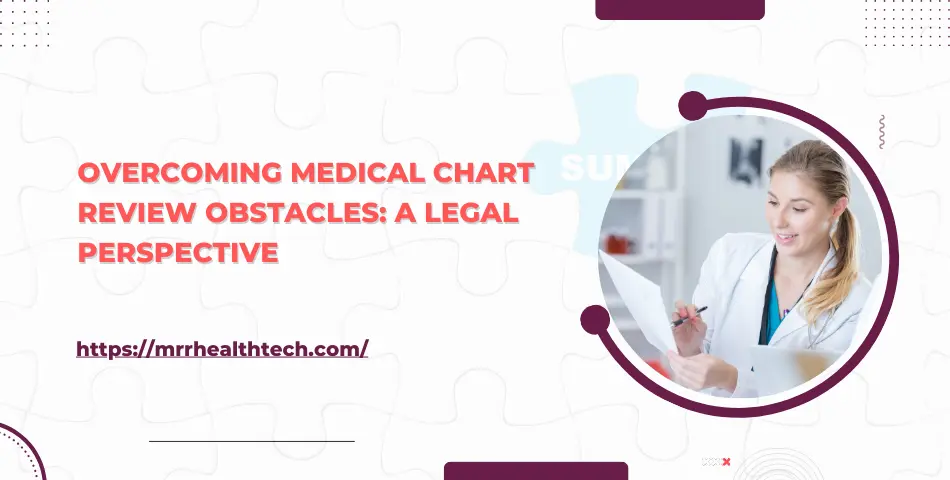
Understanding Medical Chart Review
Medical record review implies assessing a patient’s medical care documents to accumulate proof and evaluate the quality of health care provided for legal purposes. This procedure is fundamental in cases of medical malpractice, or personal injury, where it becomes necessary to establish a causal relationship and prove injuries or damages.
Key Challenges Faced by Attorneys in Medical Chart Review Cases
1. Volume of Records
Many times, during legal suits particularly those involving claims such as those related to professional misconduct by doctors and nurses, attorneys have a hard time handling enormous piles of health records containing patients’ information. Several problems are associated with bulk information:
- Time Management: Sorting through extensive documentation is time-consuming. Attorneys must balance thoroughness with efficiency, ensuring no critical detail is overlooked.
- Risk of Mismanagement: With large volumes of records, the potential for mismanagement increases. Important documents may be misplaced or improperly categorized, resulting in missed evidence or incomplete case assessments.
- Information Overload: The vast amount of information can cause data overload. Attorneys may struggle to identify pertinent details amidst extraneous information, complicating the review process.
To overcome these challenges strategic planning may be employed alongside specialized tools or services aimed at streamlining the review process itself.
2. Unorganized Records
When reviewing their own clients’ medical records during litigation attorneys face many challenges some of which are common across different practices.
Poorly arranged medical records may manifest in various ways:
- Uncertain Layout: Different healthcare providers use different formats confusing the order of events.
- Scrambled Notes: Illegible handwriting makes accurate interpretation challenging.
- Fragmented Information: Key data may not be connected and found across several documents with related relevance.
3. Complex Medical Terminology
When reviewing their own clients’ medical records during litigation attorneys face various challenges some of which are common across different practices. One such hurdle is understanding complex medical terminology and abbreviations used on these charts.
Terms like “tachycardia,” “dyspnea,” and “iatrogenic” can be daunting without a solid background in medicine.
Abbreviations
Acronyms such as EHRs (Electronic Health Records) or ICU (Intensive Care Unit) require familiarity to interpret correctly.
Technical Language
Detailed descriptions of procedures, medications, and diagnoses add another layer of complexity.
It’s important to understand these terms well to properly evaluate EHRs as well as avoid missing anything significant when performing such an analysis.
4. Privacy Regulations and HIPAA Compliance Issues with Record Reviews
When reviewing their own clients’ medical records during litigation attorneys face many challenges which most important is the issue of privacy regulations. Protected Health Information (PHI) must follow the guidelines from the Health Insurance Portability and Accountability Act (HIPAA).
Relevant Privacy Laws:
- HIPAA: it dictates the use and disclosure of PHI.
- HITECH Act: It reinforces HIPAA by advocating for electronic health records and increasing the penalties for breaches.
- State-Specific Laws: They vary between areas but commonly impose additional privacy requirements.
Potential Consequences of Non-Compliance:
- Financial Penalties
- Legal Action
- Loss of Reputation
By knowing these regulations, you can keep your record review process compliant thus protecting both your client’s data and your practice.
5. Inconsistencies and Errors Found in Medical Records During Reviews
Attorneys often face different problems when examining medical records for their cases with one big problem being inconsistencies and errors found within these reports. Some of these disparities originate from various sources such as:
- Human Error: Mistakes made by healthcare providers while entering patient details.
- Data Entry Issues: Mistakes that are made during manual entry into electronic health records (EHRs).
- Omissions: Lack of information which may create substantial gaps in the history.
These contradictions and mistakes might have a large effect on case evaluations as well as outcomes.
6. Cost Considerations Associated with Obtaining & Reviewing Medical Records
When lawyers are reviewing medical records for use in their lawsuits, they normally face numerous issues, with cost being a major one. Pursuing necessary documents from doctors can be expensive since they have charges for copying, processing as well as transmitting voluminous files.
Cost-Effective Options:
- Digital Tools: This is software that arranges and sorts medical records efficiently.
- Outsourcing: Specialized firms offering cost-effective review services can be hired.
- Collaborative Efforts: Medical professionals who can quickly and accurately provide insights into the case should be included as partners.
Solutions To Overcome the Challenges Involved in Conducting a Thorough and Accurate Medical Chart Review for Legal Purposes
Benefits of Collaborating with Medical Experts:
- Expertise in Medical Jargon: Nothing will be overlooked or misunderstood because they understand complicated terms used in medicine, abbreviations inclusive.
- Identification of Relevant Information: They help to narrow down the review process by spotting important data from large volumes of information quickly.
- Uncovering Inconsistencies: The presence of these errors within the documents enables doctors to more accurately piece together a patient’s history.
It is not only a way of engaging the best medical experts but also one that helps to save time for lawyers who need to concentrate on other essential aspects of case preparation
Outsourcing Chart Review Services to Specialist Companies: A Fast Alternative
It may be easier to outsource chart review services to specialized firms.
- Skilled Labor and Efficiency: These companies usually have highly trained medical personnel who can interpret complex medical data with precision.
- Time Effectiveness: Rather than going through numerous records, outsourced reviews allow attorneys to concentrate on the strategies of their cases instead.
- Cost Efficiency: Even though there are costs involved during outsourcing, it can be cheaper by simplifying the review process and minimizing errors that would affect the outcome of a case.
Hence for attorneys who require detailed and accurate medical chart reviews, it is practical for them to employ these facilities.
Unlock the Secret of Efficient and Accurate Medical Chart Review
Conclusion
All attorneys must bear in mind that to succeed in their personal injury and medical malpractice cases, they need to take full advantage of medical chart reviews. You must acquaint yourself with the common problems faced when reviewing charts and put in place necessary measures for addressing them to make the process easier, enhance outcomes in case, and save time. Make sure to incorporate these tactics into your work and turn chart analysis from something intimidating into a useful weapon in your legal armory.
Frequently Asked Questions (FAQs)
What is the importance of medical chart review in legal cases and what does it involve?
Concerning healthcare papers, medical chart examination entails appraising the standard of care given. For successful litigation on issues such as personal injury claims and/or medical malpractice, having well-reviewed records that are comprehensive and accurate is paramount.
What are some obstacles that lawyers face in reviewing medical charts?
When analyzing health records, attorneys face many roadblocks like working with disorganized materials; managing large volumes of documents; grasping complicated terminologies associated with medicine; making sure that they respect privacy laws including HIPAA; spotting errors and inconsistencies within medical files; working around costs linked to procuring relevant paperwork.
Cracking the code of medical jargon, one term at a time💡Empowering attorneys to navigate complex cases with confidence💯#MedicalJargonMadeEasy #AttorneyEmpowerment #MRRHealthTech pic.twitter.com/roqUPOOJDf
— MRR Health Tech (@MrrHealthtech23) July 22, 2024

